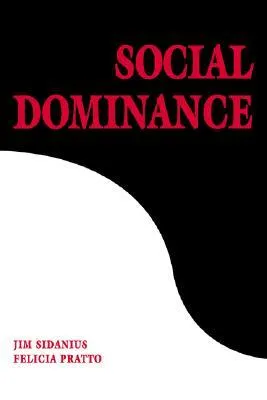Social Dominance: An Intergroup Theory of Social Hierarchy and Oppression

Navigating the Landscape of Social Hierarchy with "Social Dominance" by James Sidanius
Exploring the Dynamics of Social Hierarchy
James Sidanius's "Social Dominance: An Intergroup Theory of Social Hierarchy and Oppression" takes readers on a thought-provoking journey into the intricate web of social dynamics that shape hierarchies and oppression. Join me as we delve into the key insights provided by Sidanius and the impact of his theories on understanding the complexities of social structures.
A Personal Reflection on Social Dynamics
As someone who has often pondered the dynamics of social interactions, "Social Dominance" presented an opportunity to explore the theories that underpin our understanding of hierarchy and oppression. Sidanius's work provides a lens through which we can analyze the societal structures that influence our lives, often in ways we might not consciously recognize.
I found myself reflecting on personal experiences, instances where I observed or felt the subtle, and sometimes not-so-subtle, forces of social hierarchy. Sidanius's framework gave me a vocabulary to articulate and understand these dynamics, turning intuitions into a structured understanding of the societal structures that shape our world.
The Core Concepts: Social Dominance Orientation (SDO)
At the heart of Sidanius's theory is the concept of Social Dominance Orientation (SDO). This framework explores individuals' attitudes toward group-based hierarchy and their inclination to support or challenge existing social structures. It's a powerful tool for understanding why some individuals may be more predisposed to accept or even promote social hierarchies while others resist or seek equality.
The idea of SDO struck a chord with me as I considered the diversity of perspectives within society. It became a lens through which I could analyze the varying degrees of acceptance or resistance to social dominance, shedding light on the motivations and beliefs that underpin individuals' attitudes.
The Role of Institutions in Perpetuating Hierarchy
Sidanius doesn't stop at individual attitudes; he extends his analysis to institutions and their role in perpetuating social hierarchy. The book explores how societal institutions, from educational systems to legal structures, can reinforce or challenge existing power dynamics. This broadened perspective encouraged me to consider the systemic forces that contribute to social dominance, prompting a more comprehensive examination of societal structures.
In reflecting on my own encounters with various institutions, I could discern patterns of either challenging or reinforcing social hierarchies. It highlighted the importance of critically examining the roles that institutions play in shaping the collective psyche and perpetuating or dismantling oppressive systems.
Implications for Social Change
One of the strengths of "Social Dominance" is its exploration of the implications for social change. Sidanius delves into strategies for challenging oppressive structures and fostering a more egalitarian society. This part of the book sparked a sense of empowerment, a belief that understanding the underlying dynamics is a crucial step toward effecting positive change.
As I considered the potential applications of Sidanius's theories in advocacy and activism, it became clear that knowledge of social dominance orientation and institutional influences could serve as powerful tools in the pursuit of social justice.
In Conclusion: A Framework for Understanding Social Structures
"Social Dominance: An Intergroup Theory of Social Hierarchy and Oppression" by James Sidanius provides a comprehensive framework for understanding the intricate tapestry of social structures. Whether reflecting on personal experiences or contemplating broader societal dynamics, Sidanius's theories offer valuable insights into the forces that shape our world.
Through this exploration, I gained a heightened awareness of the interplay between individual attitudes, institutional influences, and the potential for societal change. It's a journey worth taking for anyone eager to unravel the complexities of social hierarchy and oppression.